The middle-class crisis
and how to fix it
April 25, 2025
About me
Full time lecturer at Politeknik APP Jakarta, Universitas Indonesia, and Researcher at Center for Indonesian Policy Studies.
Master in Economics at UI/VU, PhD in economics at ANU.
Focues on trade and industrial policy in Indonesia.
Ocassionally writes a blog and rants at X. Hit me @iMedkrisna.
Covers
What is middle-class?
What happens with the Indonesian middle-class?
What to do about it?
Are we heading into the right direction?
Why middle-class matter?
Typically highly educated, entrepreneurial, able to tolerate a degree of risk.
Net-saver, helps with capital deepening.
Large consumption and are willing to spend more for quality products.
Net tax payer, pays around 50.7% of tax revenue. (84% including aspiring middle class).
What is a middle-class?
| class | Definition |
|---|---|
| Poor/miskin | Below poverty line |
| Vulnerable/rentan | < 1.5x pl |
| Aspiring middle class/calon kelas menengah | <3.5x poverty line |
| Middle class/kelas menengah | <17x pl |
| Upper class/kelas atas | >17x pl |
Poverty line
Poverty line (Garis Kemiskinan, GK) measures how much money a person needs in a month to meet basic needs.
The number varies by province.
national average for cities is around 616k IDR, 567k IDR for rural areas.
Classes in Jakarta
| class | Definition |
|---|---|
| Poor/miskin | <846k |
| Vulnerable/rentan | <1,267.5k |
| Aspiring middle class/calon kelas menengah | <2,957.5k |
| Middle class/kelas menengah | <14,365k |
| Upper class/kelas atas | >14,365k |
Jakarta’s UMR is 5,067,381 IDR, which already give you a “comfortable” middle class living standard if you are single.
Consumption growth
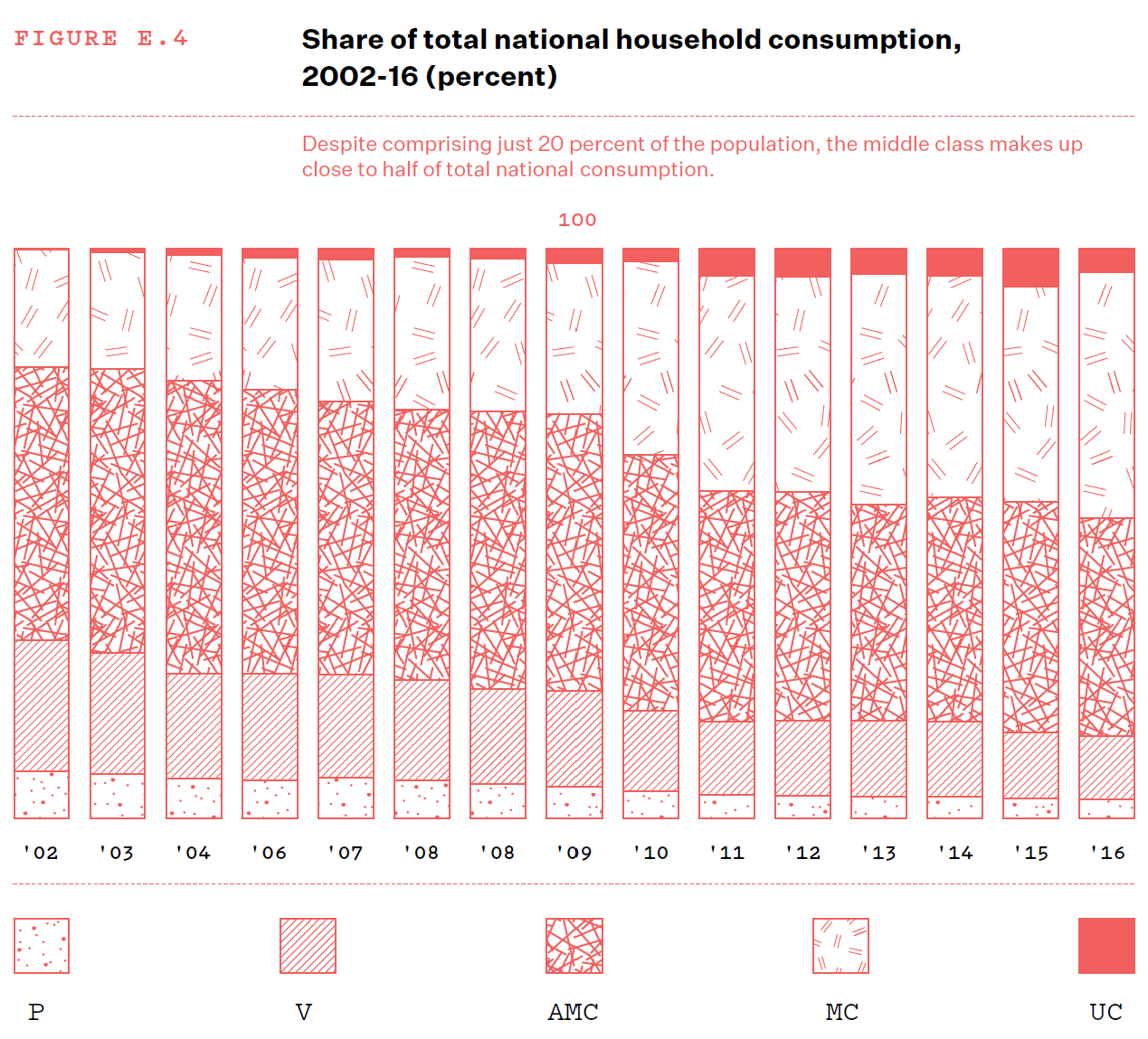
Increasingly carrying consumption growth, at 12% growth rate 2002-2016
Middle class in Indonesia
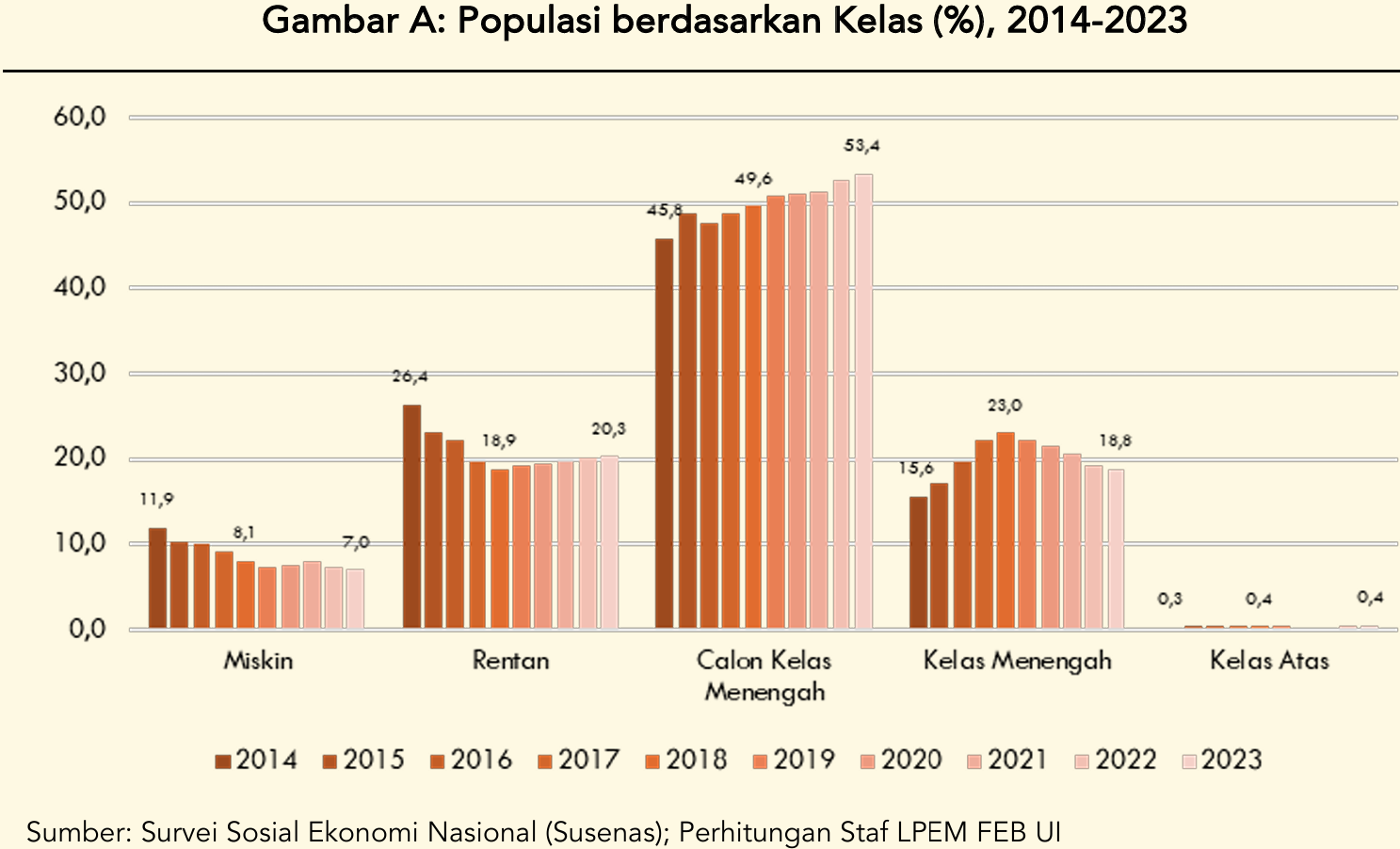
Middle class in Indonesia
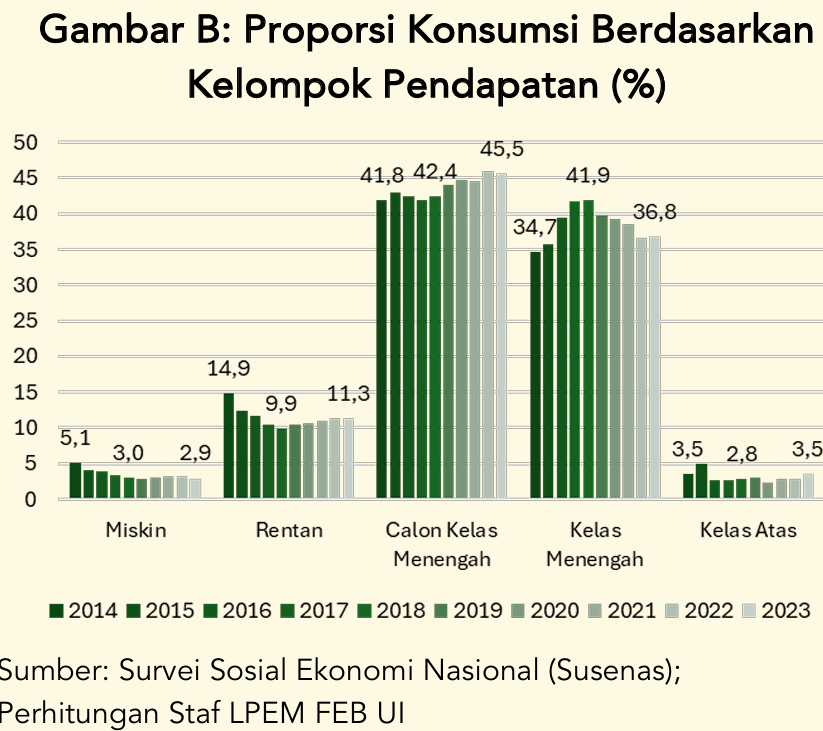
Middle class in Indonesia
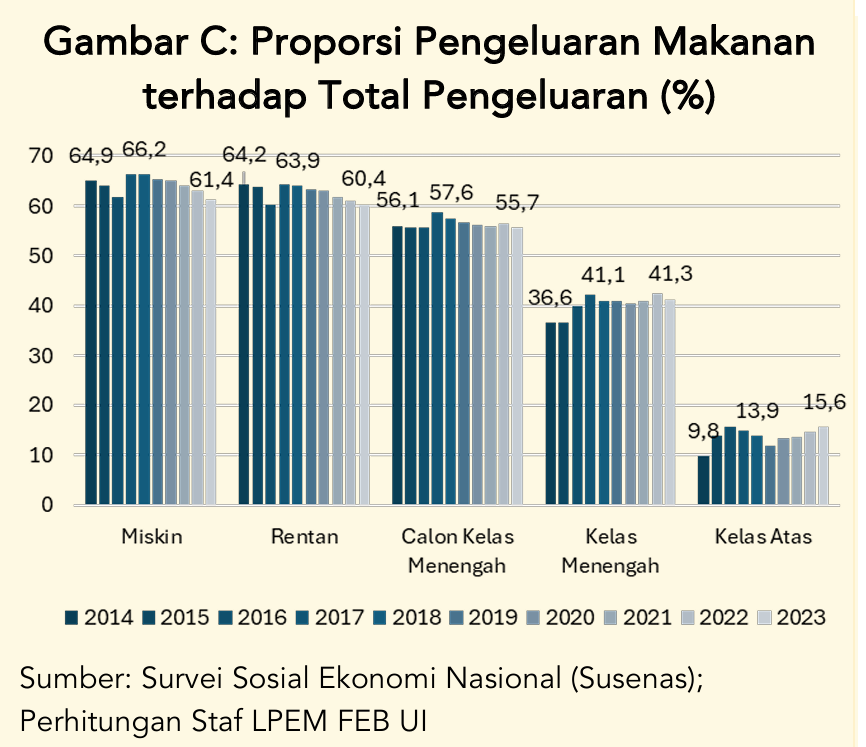
Incidence curve
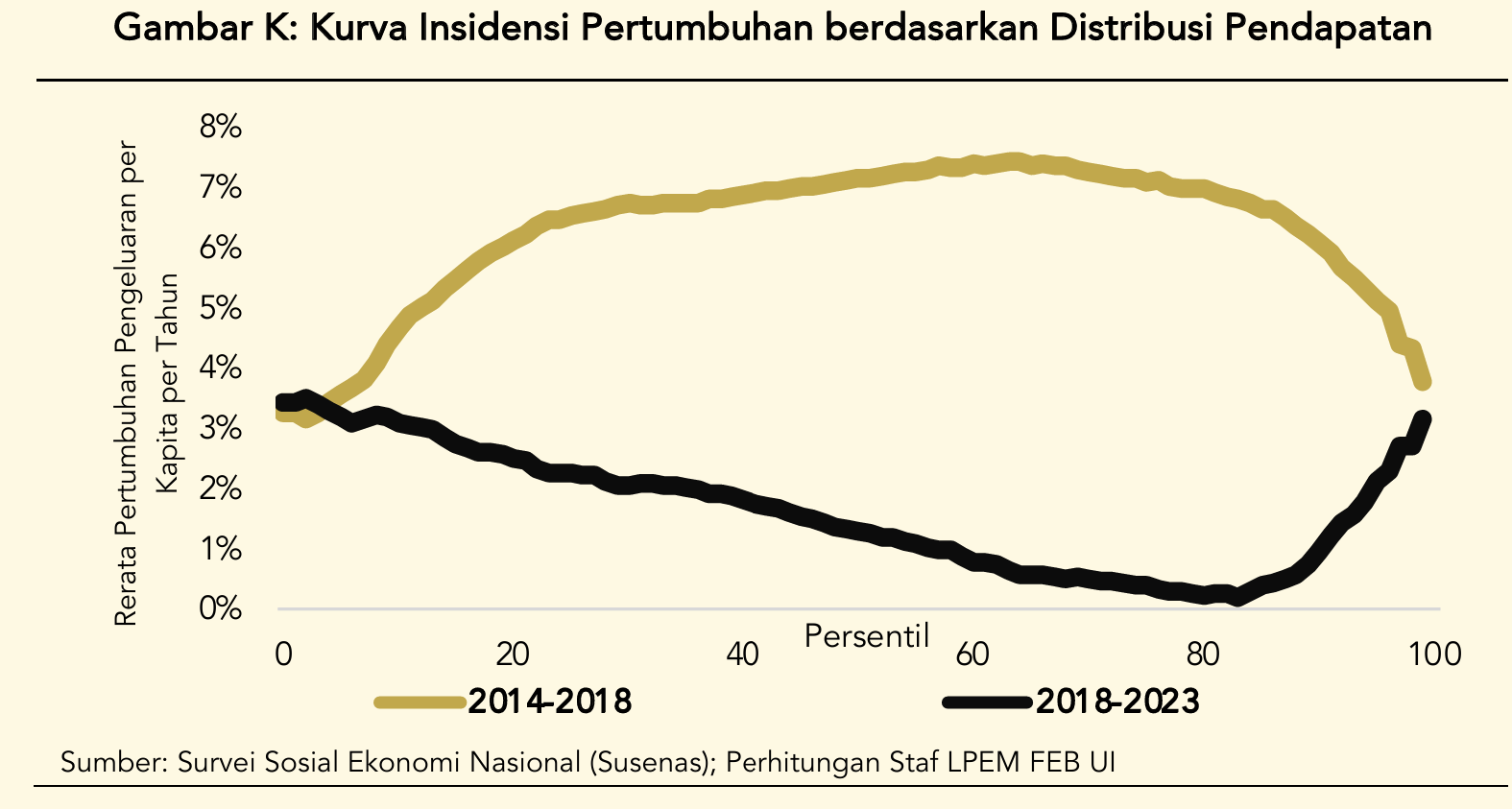
Education

Tertiery education plays an extremely important role.
Pisa
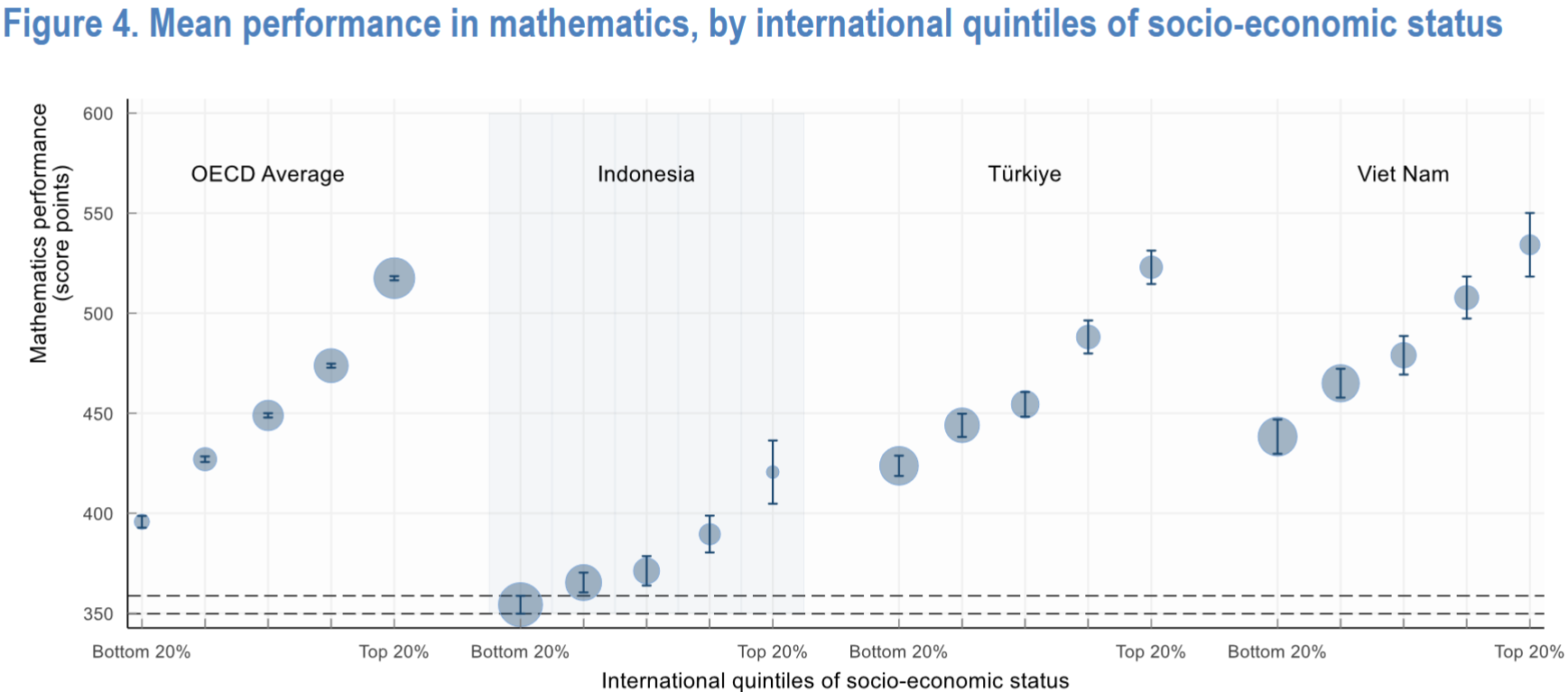
Indonesia’s PISA score is regressing, and comparatively bad
Informality
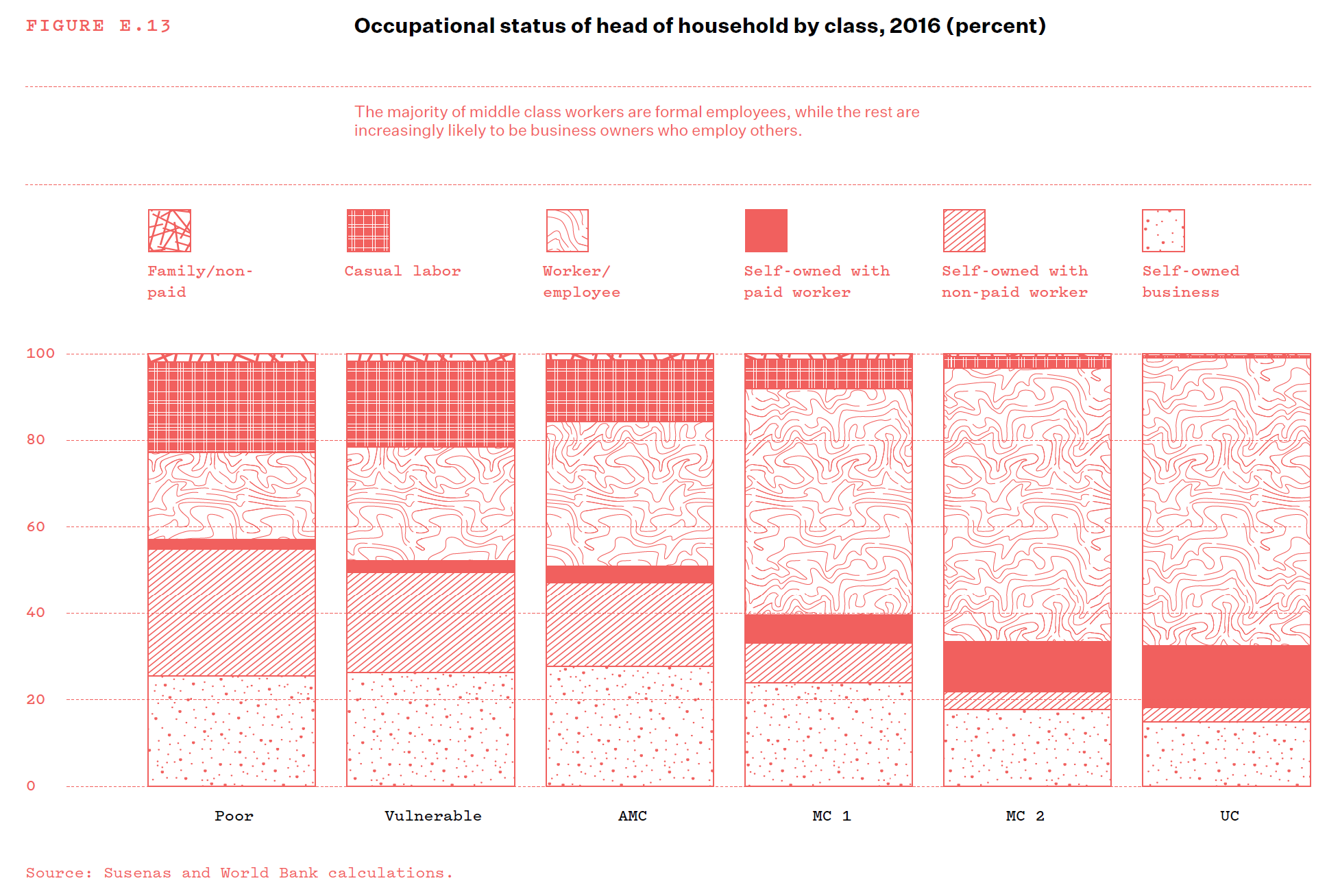
Higher class works in more formal job
Jobs
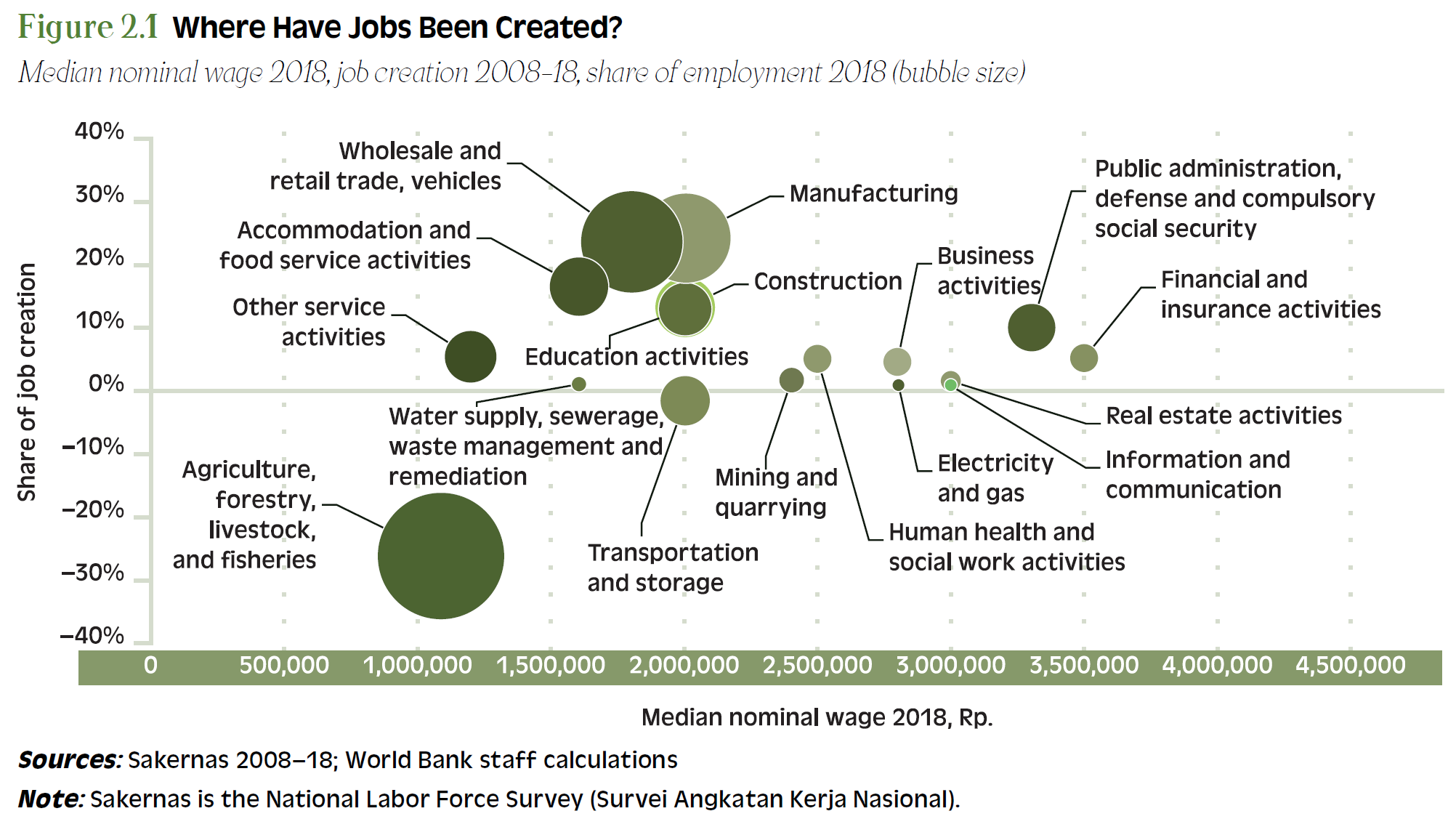
Most jobs come from wholesale/retail and manufacturing. Creating good jobs is the key for middle-class growth. Around half of middle class still work at low productivity services.
Good jobs
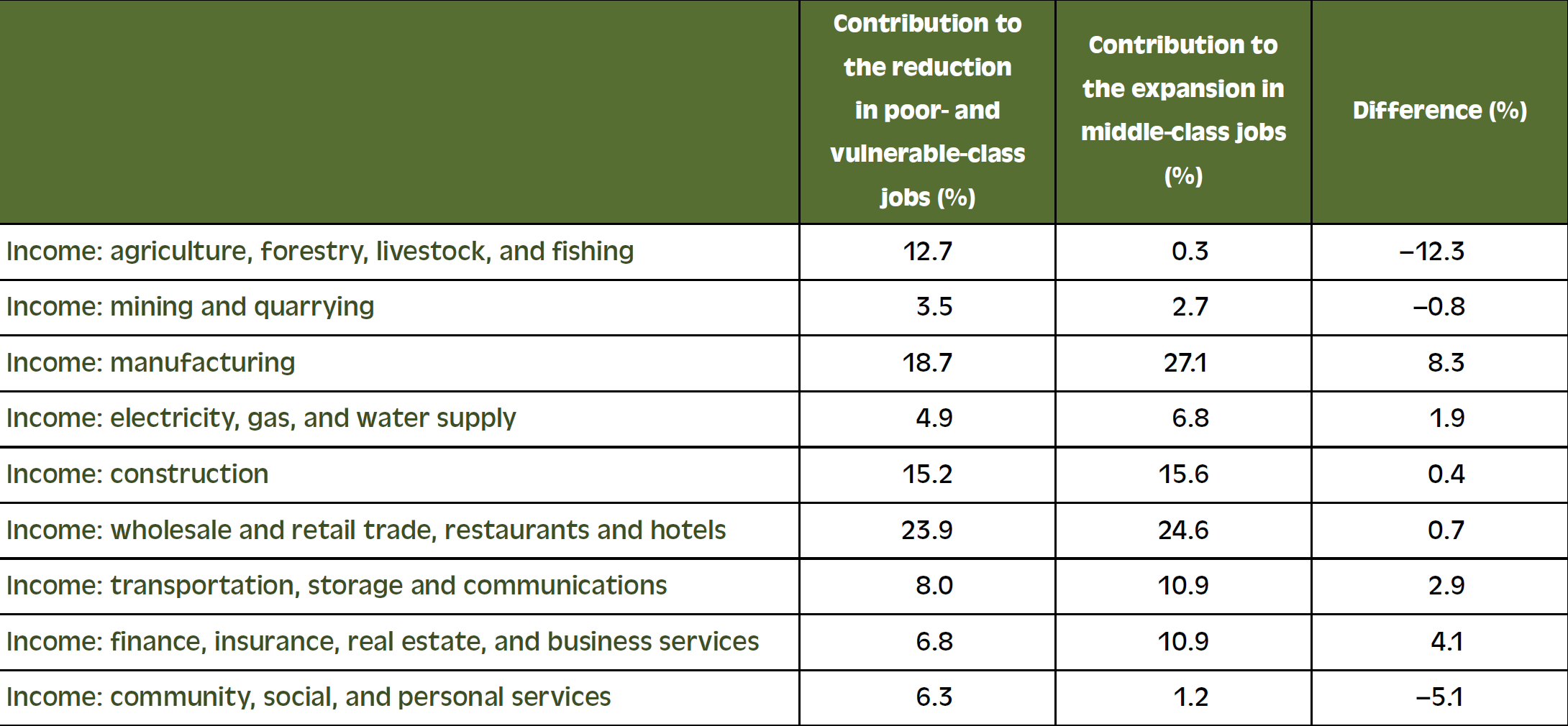
Good jobs

Good jobs

Top labor absorbers
| KBLI | Sector | Number of HHE |
|---|---|---|
| 47112 | Retail trade (traditional) | 3,285,594 |
| 56103 | Food stalls | 1,167,102 |
| 49424 | Motorcycle ride-hailing | 1,112,180 |
| 56102 | Low-end food stalls | 1,094,288 |
| 56104 | Food traders with mobile/nonpermanent premises | 839,678 |
| 96999 | Other individual service | 672,702 |
| 14120 | Tailoring of clothes to order | 513,358 |
| 47192 | Retail mainly not fbt (grocery items), not in department stores | 488,283 |
| 47992 | Retail trade of food, beverage or tobacco commodities from manufacturing industry | 432,801 |
| 45407 | Motorcycle repair and maintenance | 411,656 |
Jobs
Most Indonesian jobs are of low quality, informal (around 75%), pays lower than middle-class income (also 75%).
Two key factors to grow the Indonesian middle class:
Improving the quality of education and enrollment towards tertiery education.
Creating more middle-class jobs
Creating jobs
Indonesia has a “hollow middle” problem: Very large size of micro enterprises and large enterprises, small numbers of small and medium enterprises.
There seem to be a low level of mobility of enterprises. Various policy can lead to this type of problems.
Improving small, household enterprises will also benefit the creation of better paying jobs.
Policy recommendations
Integrating small firms to the global value chain (GVC) is an important predictor of a growing household-led enterprises.
Hub-spoke model should be used to help spillover of knowhow from FDI, where small firms benefited the supply chain brought by FDI.
Labor market efficiency measures: lower searching cost for firms e.g., making KarirHub a bit more mainstream.
Measures that Strengthens education and skills.
References
Dartanto, T., Moeis, F. R., & Otsubo, S. (2020). Intragenerational Economic Mobility in Indonesia: A Transition from Poverty to the Middle Class in 1993–2014. Bulletin of Indonesian Economic Studies, 56(2), 193–224.
